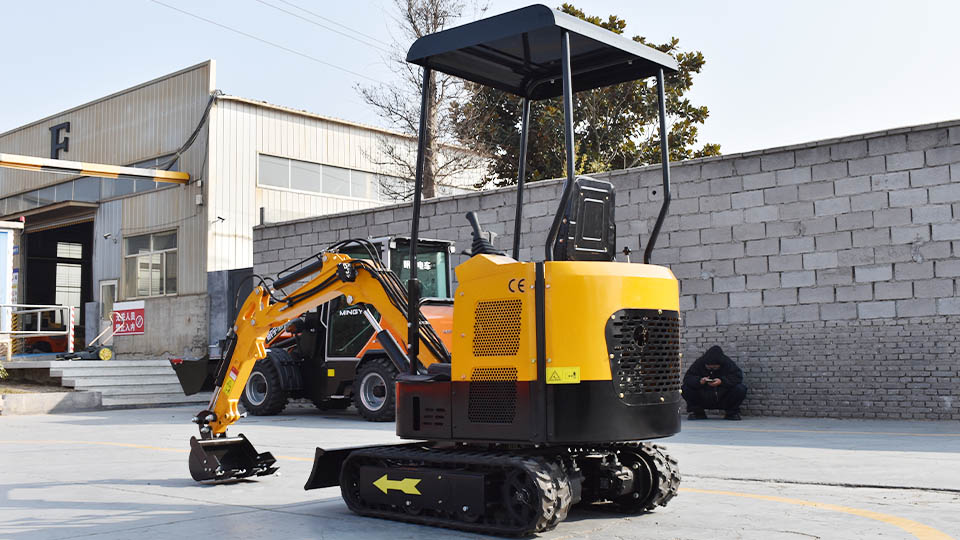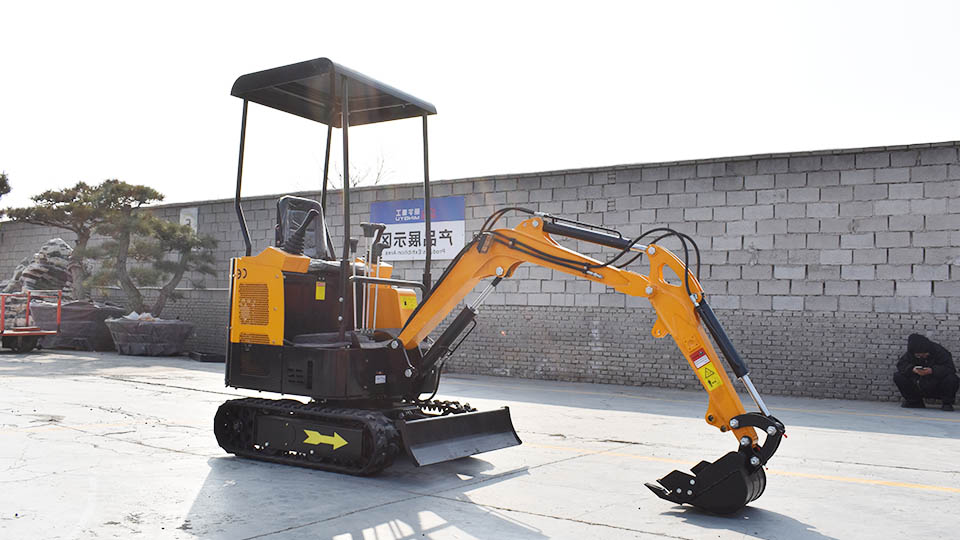Excavator Applications: From Construction to Agriculture
The excavator, a quintessential piece of heavy equipment, is a marvel of hydraulic power and engineering versatility. Instantly recognizable by its articulated boom, dipper (or stick), bucket, and rotating cab on a tracked or wheeled undercarriage, the excavator is a cornerstone of countless industries worldwide. While its robust appearance immediately brings to mind large-scale construction sites, the truth is that the applications of excavators extend far beyond digging trenches and moving earth for buildings.
This 2000-word technical article will explore the diverse and often specialized applications of excavators across a spectrum of industries, highlighting their adaptability, the various attachments that enhance their utility, and the reasons for their indispensability in modern operations, from the towering skyscrapers of urban construction to the expansive fields of modern agriculture.
The Anatomy of Versatility: What Makes an Excavator So Adaptable?
At its core, an excavator’s versatility stems from its fundamental design and the hydraulic power it harnesses.
360-Degree Rotation (Slew): The ability of the upper structure (cab, engine, boom, dipper) to rotate a full 360 degrees allows for efficient material handling without constantly repositioning the entire machine. This is crucial in tight spaces or when loading trucks.
Articulated Boom and Dipper: The multi-jointed arm provides a wide range of motion, allowing for deep digging, high lifting, and precise placement of materials.
Hydraulic Power: The sheer force generated by the hydraulic system enables the excavator to break through tough materials, lift heavy loads, and power a vast array of attachments.
Tracked or Wheeled Undercarriage:
Tracked (Crawler) Excavators: Offer superior stability, traction, and flotation on soft, uneven, or challenging terrain. Ideal for heavy digging, demolition, and off-road applications.
Wheeled (MECALAC) Excavators: Provide greater mobility and speed on paved surfaces, making them suitable for urban construction, roadwork, and utility projects where quick site-to-site movement is required. Some wheeled excavators also feature stabilizing outriggers for heavy lifting.
Attachment Adaptability: This is perhaps the single greatest factor in an excavator's widespread utility. A quick coupler system allows operators to rapidly switch between different tools, transforming the machine's primary function in minutes.
Core Applications in Construction and Demolition
The construction industry remains the primary domain of the excavator. Its roles here are fundamental and varied:

Excavation and Trenching: This is the excavator's signature role. From digging foundations for residential and commercial buildings to creating trenches for utility lines (water, sewer, gas, electricity, fiber optics), excavators provide unparalleled efficiency and precision. Their ability to dig deep and maintain accurate grades is critical for infrastructure development.
Material Handling and Loading: Excavators are highly effective at loading spoil (excavated material) into dump trucks, transferring aggregates (sand, gravel), and moving large quantities of soil, rock, or debris around a site. Their large bucket capacities and quick cycle times boost productivity.

Demolition: Equipped with specialized attachments like hydraulic breakers (hammer), pulverizers, and shears, excavators are indispensable in demolition.
Hydraulic Breakers: Used to break up concrete, asphalt, and rock. Essential for dismantling structures, road repair, and quarrying.
Pulverizers: Designed to crush concrete and separate rebar, facilitating recycling and waste management.
Shears: Used to cut through steel beams, pipes, and other metal structures during demolition or scrap processing.
Site Preparation and Grading: Beyond digging, excavators can be used for initial site clearing, removing topsoil, and performing rough grading to prepare a level base for construction. Larger excavators can also be used for mass excavation on expansive land development projects.
Road and Bridge Construction: From digging borrow pits for fill material to preparing bridge abutments and culvert installations, excavators are integral to road and bridge infrastructure projects.
Tunneling and Mining: In open-pit mining, large excavators are used for overburden removal and ore extraction. In tunneling, smaller, specialized excavators can work within confined spaces to excavate rock and create pathways.
Expanding Horizons: Excavators in Diverse Industries
Beyond construction, the excavator’s adaptability allows it to perform crucial tasks in a surprising array of sectors:
1. Agriculture
While tractors are the workhorses of agriculture, excavators have carved out essential niches:
Drainage and Irrigation: Digging and maintaining drainage ditches and irrigation canals are critical for water management in agriculture. Excavators equipped with specialized buckets (e.g., trapezoidal buckets) can efficiently shape these channels.
Land Clearing and Preparation: Removing trees, stumps, and large rocks from agricultural land to prepare it for cultivation.
Pond and Reservoir Construction: Creating or expanding ponds for irrigation, livestock, or aquaculture.
Fence Line Preparation: Digging post holes quickly and efficiently for large-scale fencing projects.
Silage Handling: In some large-scale farming operations, excavators with grapples or specialized buckets can assist in handling and packing silage.
Farm Infrastructure: Digging foundations for barns, silos, and other farm buildings.
Orchard and Vineyard Work: Digging trenches for planting rows, clearing old plants, or managing irrigation systems.

2. Forestry and Logging
Excavators are fundamental to modern forestry operations:
Road Building and Maintenance: Constructing and maintaining logging roads, often in challenging, remote terrain.
Land Clearing: Removing trees, stumps, and debris for timber harvesting or reforestation.
Log Handling (Grapples): Excavators equipped with specialized grapples (log grapples or pulpwood grapples) are used to sort, stack, and load logs onto trucks in logging yards or at landings. This is a highly efficient method for material handling in the timber industry.
Delimbing and Processing: Some specialized forestry excavators (feller bunchers, harvesters) are designed to cut down trees and process them (delimbing, cutting to length) directly in the forest, though these are highly specialized variants.
Site Preparation for Reforestation: Clearing debris and preparing the ground for planting new trees.
3. Landscaping and Hardscaping
For larger landscaping projects, excavators offer significant advantages:
Pond and Water Feature Creation: Digging and shaping ponds, streams, and waterfalls.
Tree Planting: Digging large holes for mature trees and assisting with their placement.
Boulder Placement: Moving and precisely placing large rocks and boulders for decorative or structural purposes.
Terracing and Grading: Creating tiered landscapes, retaining walls, and shaping contours.
Patio and Driveway Preparation: Excavating for sub-base preparation for large patios, driveways, or outdoor living spaces.
4. Mining and Quarrying
Excavators are indispensable in both surface and underground mining operations:
Overburden Removal: In open-pit mines, massive hydraulic excavators (often referred to as "shovels" or "diggers") remove layers of soil and waste rock to expose ore deposits.
Ore Extraction: Loading extracted ore into haul trucks for transport to processing plants.
Bench Development: Creating and maintaining benches (terraces) in open-pit mines.
Reclamation: Recontouring land and backfilling mined areas as part of environmental reclamation efforts.
Underground Mining: Smaller, purpose-built excavators operate in confined underground spaces for excavation and material handling.
5. Waste Management and Recycling
Excavators play a vital role in managing waste streams:
Landfill Operations: Compacting and moving waste, covering it with daily soil cover, and managing leachate collection systems. Excavators with specialized compactor wheels can crush and consolidate waste.
Recycling Facilities: Sorting and moving bulk materials (e.g., metals, concrete, plastics) at recycling centers. Excavators with grapples are particularly useful here.
Composting Facilities: Turning and aerating compost piles.
Hazardous Waste Sites: Remediating contaminated sites, excavating and loading hazardous materials (with appropriate safety protocols and specialized attachments).
6. Utility and Infrastructure Maintenance
Pipeline and Cable Installation/Repair: Excavating trenches for new pipelines, fiber optic cables, or repairing existing ones.
Stormwater Management: Cleaning and maintaining storm drains, culverts, and detention ponds.
Sewer Line Repair: Excavating to access and repair damaged sewer lines.
Dredging: Smaller excavators mounted on barges can perform light dredging in canals or small bodies of water.
7. Disaster Relief and Emergency Response
Debris Removal: Quickly clearing rubble, fallen trees, and other debris after natural disasters (earthquakes, floods, tornadoes).

Search and Rescue: Carefully moving debris in search operations.
Creating Access Routes: Clearing paths for emergency vehicles.
Specialized Attachments: The Key to Diversification
The excavator's adaptability is truly unlocked by its vast array of interchangeable attachments:
Buckets: Digging buckets (various sizes and tooth configurations), trenching buckets, grading buckets, clean-up buckets, skeleton buckets, trapezoidal buckets, rock buckets.
Hydraulic Breakers (Hammers): For breaking concrete, rock, and asphalt.
Grapples: Log grapples, demolition grapples, sorting grapples, five-finger grapples – for handling diverse materials.
Shears: For cutting steel and other metals.
Pulverizers: For crushing concrete and separating rebar.
Augers: For drilling precise holes for poles, piles, or foundations.
Compactors/Plate Compactors: For compacting soil, gravel, and asphalt in trenches or foundations.
Rippers: For breaking up hard ground, asphalt, or frozen soil.
Thumbers: For handling large, irregularly shaped objects.
Magnets: For lifting and sorting ferrous metals (e.g., in scrap yards).
Brush Cutters/Mulchers: For clearing vegetation and light forestry.
Tillers: For preparing soil in agricultural or landscaping applications.
Pile Drivers: For driving piles into the ground for foundations.
Conclusion
The excavator is far more than just a digging machine. Its ingenious design, hydraulic power, and unparalleled adaptability through a vast array of specialized attachments have cemented its status as one of the most versatile and indispensable pieces of heavy equipment globally. From laying the foundations of our urban landscapes to transforming agricultural land, managing vital natural resources like timber and minerals, and even responding to crises, the excavator's applications span an astonishingly wide spectrum. Its continued evolution, driven by technological advancements and the increasing demand for efficiency and precision across industries, ensures that the excavator will remain a pivotal player in shaping our world for decades to come.
Post time:Sep-25-2020
